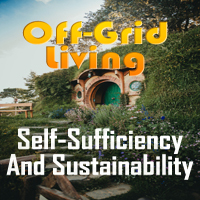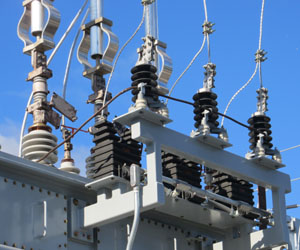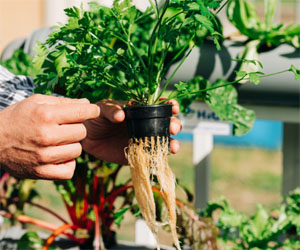


The Future Of Modern Living

In the age of technological advancement, the concept of the smart home has become increasingly prevalent. A significant component of this smart home revolution is the integration of smart appliances. These intelligent devices are designed to simplify our lives, enhance convenience, and promote efficiency. This article explores the world of smart appliances, how they work, and the numerous benefits they offer in shaping the future of modern living.
What Are Smart Appliances?
Smart appliances are traditional household devices, such as refrigerators, ovens, washing machines, and even coffee makers, that are equipped with advanced technology and connectivity features. These features allow them to be remotely controlled and monitored through a smartphone app or voice-activated virtual assistants. Smart appliances can perform a wide range of functions, from adjusting settings to sending notifications and alerts.
Convenience And Efficiency
One of the most significant advantages of smart appliances is the level of convenience they bring to everyday tasks. Imagine being able to preheat your oven on your way home, so dinner is ready as soon as you arrive. Smart appliances enable you to control and monitor their functions from virtually anywhere, giving you more control over your daily routines.
Energy Efficiency And Cost Savings
Smart appliances are designed to be energy-efficient. They often include features like energy-saving modes, remote scheduling, and real-time consumption tracking. For instance, smart thermostats can learn your heating and cooling preferences and create optimized schedules, which not only improve comfort but also save on energy costs. Smart appliances not only benefit your wallet but also contribute to environmental sustainability.
Integration With Smart Homes
Smart appliances are designed to be compatible with other smart home devices and systems. They can seamlessly integrate with centralized home automation hubs, allowing you to control multiple devices from a single app or voice-activated virtual assistant. This interconnected ecosystem enhances the overall smart home experience.
Voice Control
Many smart appliances can be controlled via voice commands through virtual assistants like Amazon's Alexa, Google Assistant, or Apple's Siri. This feature adds an extra layer of convenience, allowing you to adjust settings or start tasks without needing to touch a button or screen.
Remote Monitoring And Alerts
Smart appliances often provide real-time notifications and alerts. For instance, a smart refrigerator can notify you when it's time to replace the water filter, while a smart washer and dryer can send an alert when your laundry is done. This level of monitoring helps you stay on top of maintenance and household tasks.
Advanced Features
Smart appliances often come with advanced features and capabilities that go beyond their traditional counterparts. For example, a smart oven may offer recipe recommendations and guided cooking instructions, while a smart dishwasher can adjust its cleaning cycle based on the load's dirtiness.
The Future Of Smart Appliances
As technology continues to advance, so does the potential for smart appliances. They are becoming more intuitive, responsive, and interconnected. With the advent of 5G technology and increased data processing capabilities, smart appliances will likely become even more integrated into our daily lives.
Smart appliances are more than just gadgets; they represent a fundamental shift in the way we interact with our homes. Their ability to enhance convenience, improve energy efficiency, and integrate with other smart devices makes them an integral part of the modern smart home. As we move forward, smart appliances are set to become increasingly prevalent, shaping the future of modern living with innovation, convenience, and sustainability at the forefront.


Ensuring Safe And Sustainable Water Supply
 Rainwater is naturally soft and low in mineral content, making it an appealing alternative water source. In areas where access to clean, safe drinking water is limited, treating rainwater can provide a reliable supply. Additionally, rainwater treatment supports sustainable water management practices by reducing the burden on traditional water sources.
Rainwater is naturally soft and low in mineral content, making it an appealing alternative water source. In areas where access to clean, safe drinking water is limited, treating rainwater can provide a reliable supply. Additionally, rainwater treatment supports sustainable water management practices by reducing the burden on traditional water sources.
The Rainwater Treatment Process
Filtration: The first step in rainwater treatment is filtration. This process involves the removal of physical impurities such as leaves, twigs, and debris. Mesh screens and sediment filters are commonly used for this purpose.
Storage: Rainwater is often collected in storage tanks or cisterns. Proper storage is essential to prevent the growth of algae and the contamination of the water by external factors.
Settling: Allowing the collected rainwater to settle can help separate fine particles and sediments that may have passed through the filtration process. This is especially important for improving water quality.
Chemical Treatment: To disinfect rainwater and eliminate pathogens, chemical treatments are employed. Chlorine or ultraviolet (UV) light can effectively kill bacteria and viruses, ensuring safe water for drinking and household use.
Carbon Filtration: Activated carbon filters can be used to remove organic compounds, odors, and residual chemicals from rainwater, enhancing its taste and quality.
Reverse Osmosis: For potable water, reverse osmosis systems can be used to further purify rainwater by removing dissolved minerals, heavy metals, and other contaminants.
A Brighter, Greener Future
 Resource Conservation: Efficient energy use preserves finite natural resources like coal, oil, and natural gas. It reduces the need for extensive mining and drilling, minimizing the negative environmental impact of resource extraction.
Resource Conservation: Efficient energy use preserves finite natural resources like coal, oil, and natural gas. It reduces the need for extensive mining and drilling, minimizing the negative environmental impact of resource extraction.
Cost Savings: For individuals and businesses, energy efficiency translates to lower energy bills. By reducing waste and optimizing energy consumption, you can significantly cut your energy costs.
The Benefits Of Energy Efficiency
Lower Energy Bills: Improved energy efficiency translates directly into lower energy bills for households and reduced operational costs for businesses. This means more money in your pocket and increased competitiveness for companies.
Environmental Conservation: Reduced energy consumption leads to lower emissions of greenhouse gases, making a substantial contribution to environmental preservation and combating climate change.
Energy Independence: Energy efficiency, when combined with renewable energy sources like solar and wind power, can lead to greater energy independence. Less reliance on non-renewable resources means more stability and control over your energy supply.
A Cleaner, Safer, And Happier Living Space
 Improved Indoor Air Quality: Traditional cleaning products often release volatile organic compounds (VOCs) that can lead to poor indoor air quality. These can cause respiratory problems, allergies, and other health issues.
Improved Indoor Air Quality: Traditional cleaning products often release volatile organic compounds (VOCs) that can lead to poor indoor air quality. These can cause respiratory problems, allergies, and other health issues.
Allergen Reduction: Effective cleaning methods can help reduce allergens like dust mites, pet dander, and pollen, which can trigger allergies and asthma.
Prevention Of Mold And Mildew: Regular cleaning can help prevent the growth of mold and mildew, which can lead to respiratory problems and other health concerns.
Safer Living Environment: Cleaning without harsh chemicals reduces the risk of skin irritations, chemical exposure, and other health risks associated with chemical cleaning products.
Methods For Achieving Healthy Home Cleaning
Choose Natural And Non-Toxic Cleaners: Opt for natural cleaning solutions or non-toxic cleaning products that are free from harsh chemicals. Vinegar, baking soda, and lemon juice are great natural alternatives for many cleaning tasks.
Regular Cleaning: Establish a consistent cleaning routine to prevent the buildup of dirt, dust, and allergens. Regular dusting and vacuuming can go a long way in maintaining a clean and healthy home.
Ventilation: Ensure proper ventilation during and after cleaning to disperse any airborne particles. Open windows and doors to let fresh air circulate.
Reduce Clutter: A clutter-free home is easier to clean and reduces hiding spots for dust and allergens.
Use High-Quality Cleaning Tools: Invest in high-quality cleaning tools such as microfiber cloths and mop heads, which can effectively capture and remove dirt and dust.
Consider HEPA Filters: If you have respiratory issues or allergies, using a vacuum cleaner with a HEPA filter can help trap small particles and allergens.
Cultivating More Than Just Plants
 Mental Health Benefits
Mental Health Benefits
Mindfulness: Gardening encourages mindfulness, as it requires you to be present in the moment. The act of nurturing plants allows you to disconnect from daily stressors.
Improved Mood: The visual appeal of a well-tended garden can bring about a sense of achievement and happiness. The act of watching plants grow and bloom is therapeutic.
Mental Focus: Gardening tasks, such as planning and maintaining your garden, require mental focus and problem-solving skills, which can help sharpen your cognitive abilities.
Environmental Benefits
Conservation: Home gardens can promote biodiversity by attracting pollinators and beneficial insects. This contributes to the health of local ecosystems.
Sustainability: Growing your food reduces your carbon footprint by decreasing the need for transportation and packaging of commercial produce.
Education: Gardening offers opportunities to learn about ecosystems, sustainable practices, and the importance of protecting the environment.
Social And Community Benefits
Community Building: Gardening often brings people together. Community gardens create a sense of camaraderie and encourage social interaction.
Sharing: Gardeners often share their surplus produce with friends, family, and the community, fostering a sense of goodwill and generosity.
Teaching And Learning: Gardening can be a great way to pass on knowledge and skills to the next generation, strengthening family bonds and community relationships.
Nature's Blueprint For Healthy Gardens
 The Basics Of Crop Rotation
The Basics Of Crop Rotation
Crop rotation is a technique that involves growing different types of crops in a specific sequence over multiple growing seasons. The primary objective is to prevent the continuous cultivation of the same crop in the same area, as this can deplete the soil of specific nutrients and increase the likelihood of soil-borne diseases and pests.
Key Benefits Of Crop Rotation
Soil Health: Crop rotation helps to maintain soil fertility and structure by preventing the excessive depletion of specific nutrients. Different crops have different nutrient requirements, so alternating them allows the soil to recover and regenerate.
Pest And Disease Management: Crop rotation disrupts the life cycles of many pests and diseases. By moving crops to different areas each season, you can reduce the build-up of pathogens and pests that are specific to certain plants.
Improved Yields: Healthier soil and reduced pest and disease pressure typically result in higher crop yields. By practicing crop rotation, you can expect better harvests over time.
Weed Control: Some crops can help suppress the growth of specific weeds. By rotating crops strategically, you can naturally reduce weed infestations.
Reduced Soil Erosion: Rotated crops with varying root structures can help improve soil stability, reducing the risk of erosion, especially in sloped areas.
Crop Rotation Strategies
Crop rotation strategies can vary, but a typical system often involves dividing crops into different categories and rotating them following a predetermined sequence. Here's a simple three-category rotation plan:
Legumes: This category includes plants like peas and beans that fix nitrogen in the soil. They can be the first crop in the rotation to enrich the soil with this essential nutrient.
The Hidden Foundation Of Plant Vitality
 Aeration: Oxygen is vital for root respiration. Compacted soil or waterlogged conditions can deprive roots of oxygen, leading to poor health.
Aeration: Oxygen is vital for root respiration. Compacted soil or waterlogged conditions can deprive roots of oxygen, leading to poor health.
Temperature And Climate: Extreme temperatures and environmental conditions can stress roots. Plants adapted to specific climates are more likely to have healthier roots.
Implications Of Root Health
Root health has far-reaching implications for plant growth, crop yield, and ecosystem stability:
Enhanced Nutrient Uptake: Healthy roots efficiently absorb essential nutrients, leading to better growth and crop production.
Drought Tolerance: Robust root systems improve a plant's ability to withstand periods of drought by accessing water from deeper soil layers.
Pest And Disease Resistance: Healthy roots are better equipped to defend against pathogens and pests.
Erosion Control: Plant roots stabilize soil and prevent erosion, preserving valuable topsoil.
A Path To Sustainability And Well-Being
 Harmony with nature is not merely an abstract ideal; it is a practical and philosophical approach to life that has profound implications for our environment, mental well-being, and the future of our planet.
Harmony with nature is not merely an abstract ideal; it is a practical and philosophical approach to life that has profound implications for our environment, mental well-being, and the future of our planet.
At its core, harmony with nature emphasizes the interconnectedness of all living things. It acknowledges that humans are not separate from the environment but an integral part of it. When we live in harmony with nature, we treat the Earth and its resources with respect, realizing that our actions have consequences not only for the planet but for future generations.
One of the fundamental principles of harmonious living is sustainability. This means using resources responsibly, minimizing waste, and conserving energy. Sustainable practices include reducing, reusing, and recycling, and making choices that have a lesser impact on the environment. By embracing sustainability, we reduce pollution, conserve biodiversity, and decrease our carbon footprint.
Harmony with nature also fosters a deep appreciation for the natural world. People who live in harmony with nature often spend more time outdoors, cultivating a sense of wonder and gratitude for the Earth's beauty.
A Crucial Step Towards A Sustainable Future
 The Global Water Challenge
The Global Water Challenge
Water scarcity is a pressing concern that affects both developed and developing nations. Climate change, population growth, urbanization, and inefficient water management practices all contribute to this crisis. According to the United Nations, by 2030, nearly half of the global population will be living in areas with high water stress, underscoring the urgency of effective water conservation.
The Significance Of Water Conservation
Water conservation is the practice of using water more efficiently and minimizing waste. It is a fundamental approach to address the water crisis for several reasons:
Preserving Natural Ecosystems: Adequate water conservation ensures that freshwater ecosystems, such as rivers, lakes, and wetlands, maintain their vitality, safeguarding biodiversity and ecological balance.
Reducing Energy Consumption: Treating, transporting, and heating water demands substantial energy. Water conservation lowers energy use and carbon emissions, contributing to a greener environment.